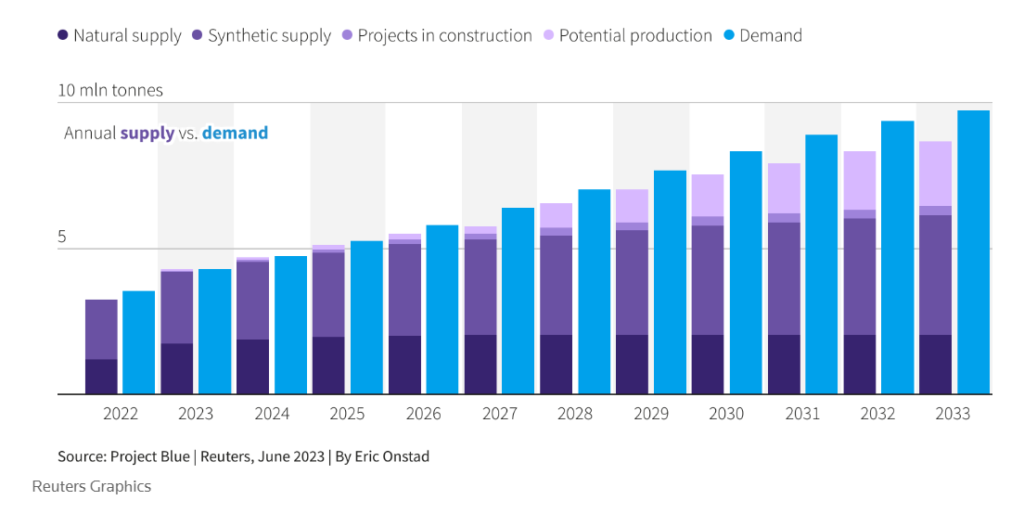China on Friday vowed to curb the exports of certain types of graphite; that is key in manufacturing EV batteries. China will now require export permits for some of their graphite materials in order to protect national security, and to maintain its manufacturing dominance.

Being the world’s largest producer and exporter of graphite, it also refines almost 90% of the world’s graphite in a shape that could be used in all EV battery anodes. Beijing took this decision at a time when many countries are pressuring the Chinese companies over their manufacturing practices.
The ministry in its press briefing said that the move was taken “to ensure the security and stability of the global supply and industrial chain, and to better safeguard national security and interests of China.”
It further added, that the move is not directed to any particular country. According to the customs data, the top importers of Chinese graphite are Japan, South Korea, USA, and India.
ALSO READ: US Chipmakers to attend meeting on Biden’s visit to Vietnam
What does the curb on graphite exports mean?
These new restrictions mean that exporters would be required to apply for permits to sell two types of graphite; a synthetic graphite material of high intensity, and natural flakes of graphite; as of December 1.
In addition to that, three other types of highly sensitive graphite are already under the temporary control list of the commerce ministry. Meanwhile, the ministry has lifted temporary controls on five less sensitive graphite materials, commonly used in steel and chemical industries.
These curbs will ensure graphite supply in the local markets, to be used for military purposes, aerospace and battery-making industry.
With ever-increasing EV consumption, automakers are racing in to lock the supplies from outside China despite the shortages in the international market. “It’s a restriction on EV material flowing out of the country, as many new energy companies are building up more plants overseas.”

Some similar curbs
The decision of China to curb the exports of graphite is being viewed to be somewhat similar to those already in place since August 1 for gallium and germanium. Both of these metals are used in manufacturing micro chips, resulting in reduced exports of these metals and increased prices in the markets elsewhere.
Analysts are unsure of the impact of these new curbs in the short-term. Ivan Lam, senior analyst at Counterpoint Research says, “this control is not a complete ban, and there has been no significant impact on any industry during the previous temporary control.”
Although the prices of graphite flakes are almost down by a quarter at 3,950 yuan ($539.62) per metric ton, from the beginning of the year due to reduced demand. However, the prices of graphite are likely to increase after new measures.
DONT FORGET: Tesla launches brand new Model 3 in China with longer driving range
Reason behind the curbs?
The main reason China has decided to curb the exports of graphite, even though it is a crucial battery material, is a continuous pressure on its industry regarding the manufacturing practices they use.
Moreover, the European Union is looking to impose tariffs on Chinese-made Electric Vehicles, arguing that they leverage unfair subsidies. The United States of America also imposed new restrictions on outflow of high-tech chips, including stopping the sales of advanced AI chips made by Nvidia.
Earlier this week, Washington announced that it would jack up the restriction levels on exports of crucial semiconductors used to power AI systems. The move from Washington is seen as its latest to restrict China’s access to advanced technology.
($1 = 7.3200 Chinese yuan renminbi)














